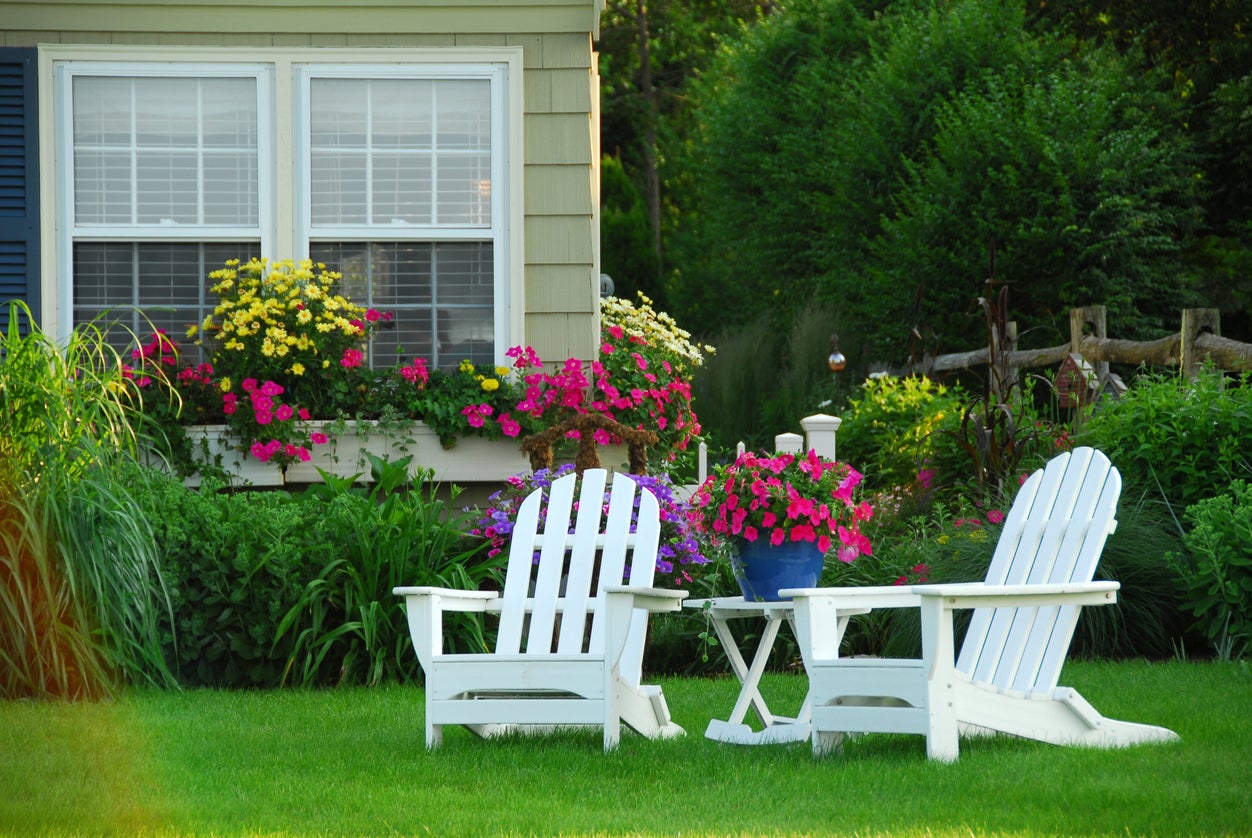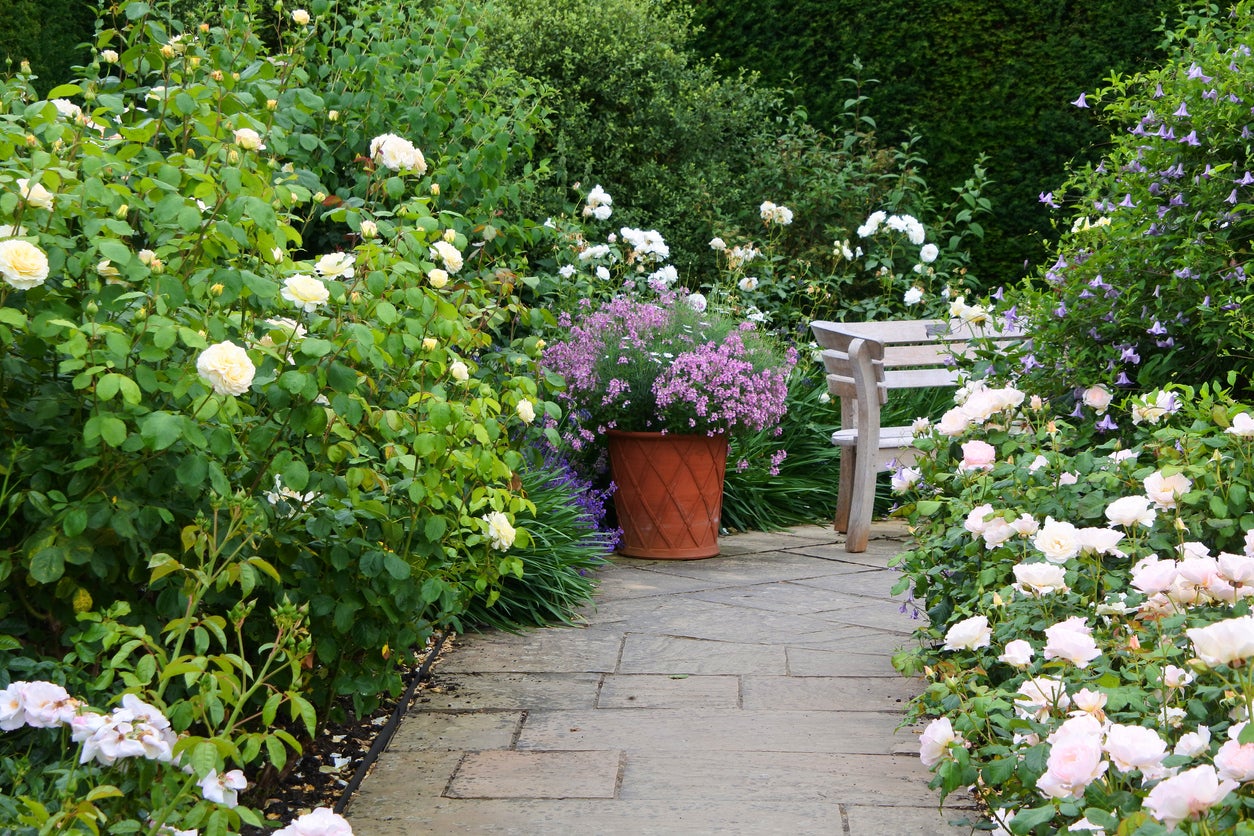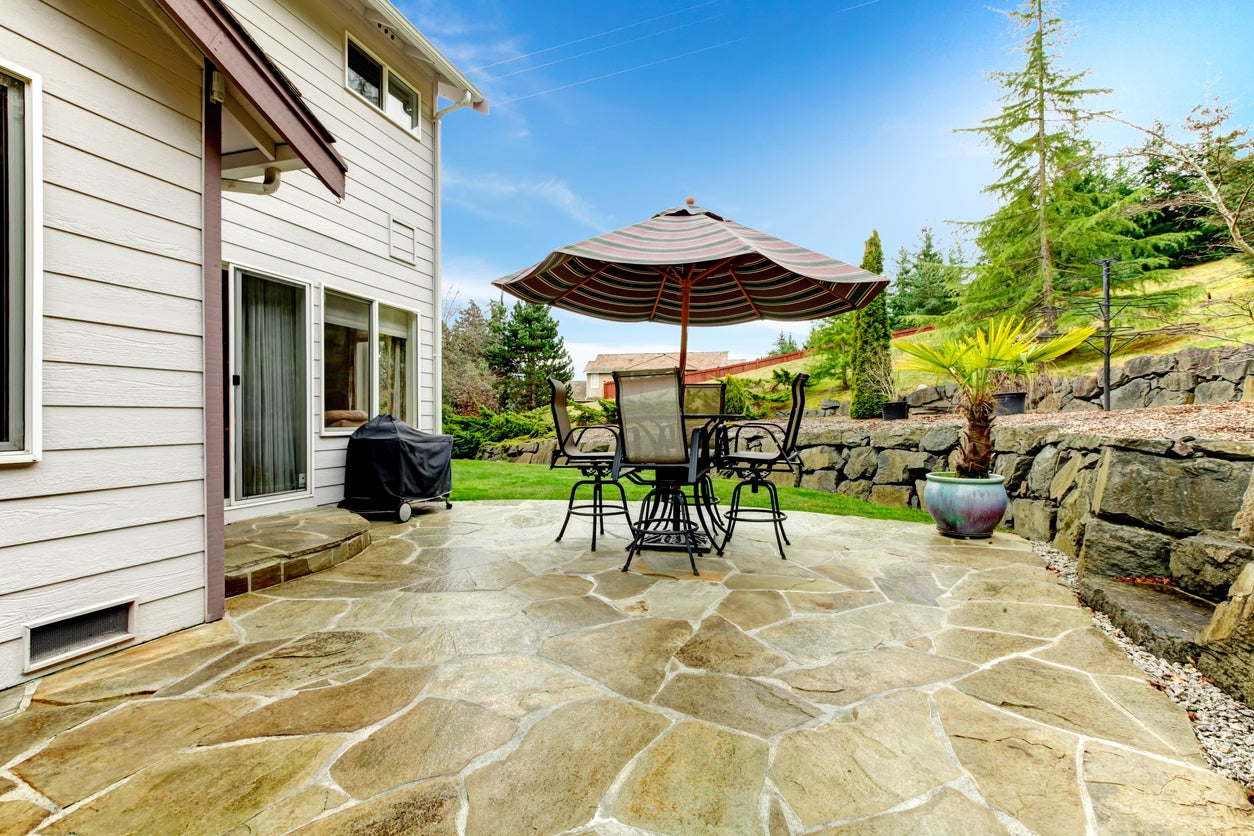We may earn revenue from the products available on this page and participate in affiliate programs. Learn More ›
A New Plan for Your Backyard

If there’s one thing that can save you the most time and money when making over your backyard, it’s having a plan. Once you knowing what you want and charting a path for achieving your vision, everything else seems to fall into place. If you have dreams of lounging by a fire pit on on your terrace, for example, you can achieve them by repurposing materials from the uneven stone garden path you’ve been meaning to rip out.
If you’re on a tight budget, it’s particularly important to think creatively and plan carefully. To get those creative juices flowing, browse through this collection of easy, inexpensive ideas for a first-rate backyard makeover. Whether you’re hoping to add a patio, beef up your landscaping, or plant a garden to bring beauty and wildlife to your backyard, you can glean valuable inspiration from these 10 great makeovers. No matter the size of your yard or budget, you can turn your backyard into an inviting oasis that guests and pollinators will love.
Define Your Spaces

Determining the kinds of spaces you need—dining area, outdoor kitchen, shady lounging spot, play area—and clearly defining them can make a big visual and functional impact on a yard. You may be able to do this quickly and inexpensively by simply repositioning the furniture and accessories you already have.
Defining your living spaces can create special spots where you can work, relax, play with the kids, or grow food. If clutter is in the way, you might want to build or buy a storage shed to keep kids’ toys or your gardening supplies out of sight when not in use.
RELATED: 45 Backyard Landscaping Ideas for Creating the Ultimate Outdoor Living Space
Create a Garden Path

Adding a meandering path gives a polished look to an otherwise untamed space. You can choose to buy pavers, or even reuse any that you free up as you reimagine your landscape. For a more budget-friendly alternative, opt for quarter-inch crushed rock, which comes in a variety of colors. First, determine the shape you want your pathway to take, and then mark and edge it. If you’re going with crushed rock, you’ll need enough to create about a 4-inch layer to suppress weeds. Flatten the surface with a tamper (plate compactor).
No matter what type of pathway design or material you choose, it’s critical to plan spacing, create the edges, and level the ground before installing any materials.
RELATED: How To: Lay a Stone Garden Path
Concrete Cover-Up

If your plain concrete patio looks dreary, there are easy, inexpensive ways to give it a fresh look. The first is to coat the surface with masonry stain or concrete paint in a color of your choice, like warm honey or deep brown. A second option: Lay slate tiles over the concrete with a thin-set mortar like VersaBond to create an elegant appearance. Or make the job really simple and just invest in an outdoor rug that suits your taste and decor.
Try a Trellis

You see trellises in garden centers all the time, and you’ve probably never even thought about picking one up, but these architectural details can add a quick and easy accent in the yard. Place one toward the back of the garden as a focal point, or put one in your vegetable garden to make those cucumbers and peas look like they are part of the design. You can even install a trellis—or better yet, an arbor—at the entrance to a garden or outdoor living area, and then choose a flowering vine to trail through the lattice.
Apply Some Paint

This is a particularly helpful backyard booster for single-story homes. Paint the back of your house a different color than the other three sides, opting for a shade that complements the garden. Go for neutral shades like taupe, beige, or light gray to coordinate with hardscaping features such as a stone path or a honey-hued fence. If painting a side of the house feels too ambitious, simply give your back fence or wall a pop of color that will help highlight your flowering plants and evergreen shrubs. Just be sure to choose the best primer and exterior paint for your wall’s or fence’s material.
Think Vertically

If your backyard features a large, flat lawn, add some dimension by positioning boulders (available at landscaping supply stores) throughout the space. You might choose to arrange them individually or cluster a few together. Feel free to set them either vertically or horizontally, and bury them a few inches into the ground to make them look like nature dropped them there.
Don’t be afraid to cut into the lawn to accommodate boulders; most grasses will regrow. Leave some space around for planting colorful perennials or small shrubs.
Mulch, Mulch, Mulch

Need something to tie the backyard together? Lay like-colored mulch on all flower beds and exposed soil to give your backyard a more unified look. As an added benefit, mulch blocks weeds and helps the soil retain moisture. Organic mulches also break down to provide much-needed nutrients for your plants.
Garden with Wildlife in Mind

It’s not that hard (or expensive) to make your backyard more bird- and insect-friendly. If you’re planning on adding color anyway, choose plants that attract hummingbirds, bees, or butterflies. If space is an issue, fill a few containers with the plants pollinators love. Include low-growing and thorny shrubs to provide hiding spots for birds, and trees to offer shelter for your flying friends and shade for you!
Plants aren’t your only options for attracting wildlife. Birdbaths are a draw for feathered creatures year-round, and they can be lovely in their own right. Butterflies and bees enjoy shallow water puddles. Make your own by putting water in an old dish or container, then add sand and rocks for the insects to land on.
Replace Annuals With Native Perennials

One of the best ways to attract local wildlife is to provide them with their preferred sources of food and shelter, and these tend to be plants that are native to your area. As you populate your garden with plants, try to stick with native perennials.
Just as local wildlife has adapted to your area’s flora and fauna, native plants have adapted to your region’s typical soil and weather conditions. These adapted plants have the best shot at surviving in your yard, even with a little neglect. Buying perennials may cost more up front, but you’ll save money in the long run if you slowly fill your landscape with perennials, most of which can live for 5 or more years, instead of planting a garden full of annuals each season.
Repurpose and Recycle

Save money and landfill space by reusing objects around your home or yard. For example, add some character or whimsy by tilting that leaky metal watering pail and planting some pansies in the top. Come up with creative uses for broken pots so they don’t have to go in the garbage. Many household objects work well for growing plants, as long as they provide drainage.
You may even be able to fashion garden accessories and structures out of repurposed items. Old fence posts can be cut up into plant tags or repurposed as trellises. Periodically check local social media sites to see if neighbors are offering hardscaping materials on the cheap (or free), especially if you just need to line a short path or garden bed. You know what they say about one man’s trash!

Everything You Need for a Lush and Healthy Lawn
Keeping your grass green and your plants thriving doesn’t just take a green thumb—it starts with the right tools and supplies.
